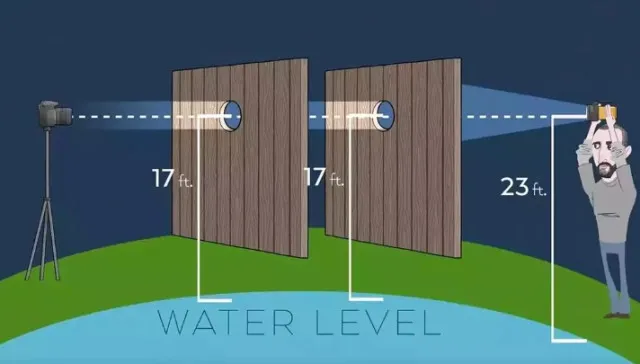In a dramatic twist of irony, a flat Earther’s $19,000 experiment to prove the Earth is flat ended up supporting the opposite conclusion.
Despite a wealth of scientific evidence confirming the Earth’s roundness, some proponents of the Flat Earth theory continue to challenge this well-established fact.
A man tried an experiment to prove the Earth’s roundness.

Flat Earth conspiracy theorists often go to great lengths to find evidence supporting their beliefs.
One notable example is Bob Knodel, a prominent Flat Earther and YouTuber.
He invested a significant amount of money into an experiment aimed at disproving the Earth’s spherical shape.
His experiment was featured in the Netflix documentary *Behind the Curve*, which aired in February 2019.
The documentary explored various Flat Earth advocates, including Knodel, and presented scientific perspectives on the movement.
He designed a test where a camera was positioned to film through two holes in a fence, both equidistant from the ground.
A person on the other side shone a torch through the holes.
Knodel’s hypothesis was that if light was visible through the camera, it would confirm that the Earth is flat.
This was based on the idea that all components of the setup were at the same height.
Results and reactions about flat earther’s experiment
Contrary to his expectations, Knodel’s experiment did not yield the results he hoped for.

When he could not see the light through the camera, he was initially puzzled, responding with a muted “interesting.” In a subsequent YouTube video, he reported that the gyroscope detected a 15-degree per hour drift, which was an unexpected result.
Knodel described this finding as a ‘problem’ and attempted to dismiss the evidence.
Additionally, he searched for ways to refute the apparent motion of the Earth that the gyroscope had registered.
Irony and legacy
Bob Knodel’s costly experiment ultimately contradicted his beliefs, highlighting the robustness of the evidence supporting the Earth’s roundness.

Despite his efforts, the results reinforced the scientific consensus rather than disproving it.
He said: “What we found is, is when we turned on that gyroscope we found that we were picking up a drift. A 15 degree per hour drift.
“Now, obviously we were taken aback by that.”
Admitting the results were ‘kind of a problem’, he continued: “We obviously were not willing to accept that, and so we started looking for ways to disprove it was actually registering the motion of the Earth.”
Knodel passed away on April 6, 2023, at the age of 62, leaving behind a legacy marked by the unintended validation of established scientific principles.

This case serves as a poignant reminder of how scientific inquiry can lead to unexpected conclusions.
Even when individuals are determined to prove otherwise, the evidence may still reveal the truth.
